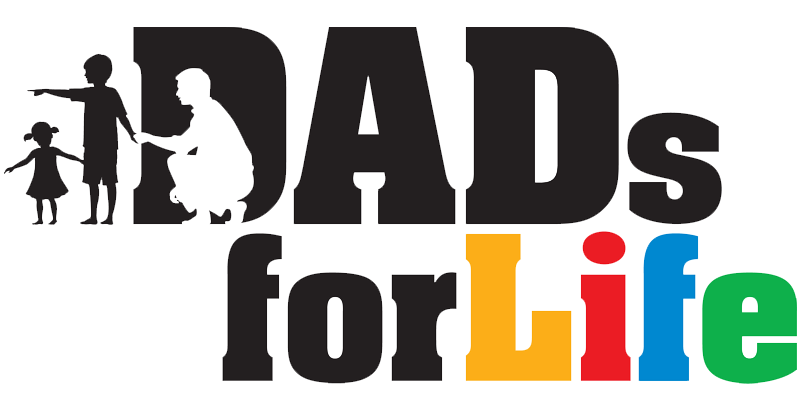Introduction
 Among the various challenges faced by non-residential fathers, or fathers who live apart from their children, those faced by fathers behind bars are perhaps the most pronounced. The number of children separated from their fathers due to imprisonment is far higher than those separated from their mothers due to the vast majority of prisoners being men (globally, over 90% of prisoners are male) (Rosenberg, 2009). This article reviews research evidence on the impact of parental incarceration on children; the factors that make a positive difference to the father, child, and family; and implications for practice.
Among the various challenges faced by non-residential fathers, or fathers who live apart from their children, those faced by fathers behind bars are perhaps the most pronounced. The number of children separated from their fathers due to imprisonment is far higher than those separated from their mothers due to the vast majority of prisoners being men (globally, over 90% of prisoners are male) (Rosenberg, 2009). This article reviews research evidence on the impact of parental incarceration on children; the factors that make a positive difference to the father, child, and family; and implications for practice.
Parental incarceration takes a toll on children
- The gender of the incarcerated parent has been correlated with the type of behaviour manifested in the child. Father absence is associated with “externalising behaviours” (such as hostility, use of drugs or alcohol, running away, school truancy, discipline problems, aggressive acts and involvement in delinquent activities). Absence of the mother is linked to “internalising behaviours” (such as social or emotional withdrawal, unwillingness to engage in play, a fear of school, reduced focus on school work, being highly emotional and having nightmares) (Fritsch & Burkhead ,1981)
- In interviews with children aged three to 19 with imprisoned fathers in the UK, the majority expressed feelings of sadness or distress. All reported having to deal in some way with their father’s imprisonment in the school setting, such as being bullied by other children, or feeling a need to hide their father’s imprisonment from teachers (Boswell, 2002, as cited in Rosenberg, 2009).
- A qualitative study in Jordon found that the most commonly noted changes in children’s behaviours following their fathers’ imprisonment was fear, feeling upset and sad, missing their fathers, feeling deprived, having low self-esteem, and loneliness (Gharaibeh, 2008).
- A study in Singapore to identify significant predictors of re-offending in a sample of 772 adolescent offenders indicated that reported father criminality was a significant risk factor for adolescent re-offending, in addition to other risk factors, such as an earlier age of first criminal offense (Ang & Huan, 2008).
Father-child contact is important to children
- Visits by children to their fathers in prison have been found to yield multiple benefits. They allow children to express their emotional reactions to the incarceration, and to see their father realistically for how he is. For fathers, these visits provide a context for working out their feelings regarding the separation and the opportunity to maintain and continue a relationship with their child upon release (Magaletta & Herbst, 2001).
- In one Danish study, young children said that the first visit to a prison had been especially important to them to be able to see that their parent was still alive (Christensen, 2002, as cited in Rosenberg, 2009).
- Children of incarcerated fathers in the UK expressed a mix of hopes and fears for their future relationships with their fathers. While visits were a major way of continuing father-child contact, other non face-to-face means also served the purpose of reminding children that their absent father continued to think of them between visits. Most appreciated any possible opportunity for contact and would have liked more if it were available. Although children sometimes experienced fears about the future, all were looking forward to the day when their fathers would return home, and where this was a possibility, they would become a whole family once again (Boswell, 2002).
Parenthood is an anchor for incarcerated fathers too
- Several studies have suggested that inmates who maintain a connection to their families make quicker adjustments to prison life, have fewer disciplinary problems while incarcerated and are less likely to re-offend after release (Magaletta & Herbst, 2001).
- Prisoners who experience more family contact, whether through visits or mail, or via programmes intended to facilitate contact, experience lower recidivism and greater post-release success and outcomes (Visher & Travis, 2003).
- A review of research on prisoners’ family relationships yielded two consistent findings: male prisoners who maintained strong family ties during imprisonment had higher rates of post-release success than those who did not, and men who assumed responsible husband and parent roles upon release also had higher rates of post-release success than those who did not (Hairston, 1988, 1991).
Responsible fatherhood programmes in and post-prison
For these reasons, fatherhood programmes for inmates and those transiting out of prisons can tap into fathers’ motivations to be more responsible and involved in their children’s lives, and increase fathers’ incentives to find and maintain employment upon their return to the community (Brenner, 2000).
Evidence-based practice wisdom points to the following as particularly successful avenues through which such responsible fatherhood initiatives can be implemented (USDHS, 2008):
- Skills-oriented group parenting workshops;
- Enhanced visitation and/or parent-child play activities to build the father-child; relationship, which may or may not be supervised by programme staff;
- Innovative non face-to-face initiatives to maintain contact;
- Family, individual, or group therapy to facilitate deeper behavioural change; and
- Post-incarceration family reintegration initiatives to support the father’s transition back into the family
Conclusion
Research shows that fathering is one of the rare domains where inmates display an intrinsic motivation to learn, and a voluntary willingness to change (Showalter & Jones, 1980). Men’s identities and aspirations as parents are thus a critical opportunity for clinicians – both within the prison environment and in the community – to capitalise on. Doing so can effect positive change to the father-child relationship, and to fathers’ individual outcomes as well.
Works Cited:
- Ang, R. P. & Huan, V. (2008). Predictors of Recidivism for Adolescent Offenders in a Singapore Sample. Criminal justice and behavior, 35(7), 895-905.
- Brenner, E. (2000). Father in prison: A review of the data. National Centre on Fathers and Families, USA
- Boswell, G. (2002). Imprisoned fathers: The children’s view. The Howard Journal, Vol 41(1), 14-26.
- Fritsch, T. A. & Burkhead, J.D. (1981). Behavioural reactions of children to parental absence due to imprisonment. Family Relations, 30(1), 83-88.
- Gharaibeh, F. (2008). The effects upon children in Jordan of the imprisonment of their fathers: A social work perspective.International social work, 51(2), 233-246.
- Hairston, C.F. (1988). Family ties during imprisonment: Do they influence future criminal activity? Federal Probation, 52(1), 48-52.
- Hairston, C.F. (1991). Family ties during imprisonment: Important to whom and for what? Journal of Sociology and Social Welfare, 18(1), 87-104.
- Magaletta, P.R. & Herbst, D.P. (2001). Fathering from prison: Common struggles and successful solutions. Psychotherapy, 38(1), pp 88-96.
- Rosenberg, J. (2009). Children need dads too: Children with fathers in prison. Quaker United Nations Office. Retrieved from:http://www.quno.org/geneva/pdf/humanrights/women-in-prison/CNDT-English.pdf
- Showalter, D., & Jones, C.W. (1980). Marital and family counselling in prisons. Social Work, 5(3), 224-229.
- United States Department of Human Services (2008). Incarceration and the family: A review of research and promising approaches for serving fathers and families. Retrieved from: http://aspe.hhs.gov/hsp/08/MFS-IP/Incarceration&Family/ch7.shtml#_Toc208309201
- Visher, C.A. & Travis, J. (2003). Transitions from prison to community: Understanding individual pathways. Annual Review of Sociology, 29, 89-113.
About the Author: The Dads for Life Resource Team comprises local content writers and experts, including psychologists, counsellors, educators and social service professionals, dedicated to developing useful resources for dads.
First published on 08-03-2012.
